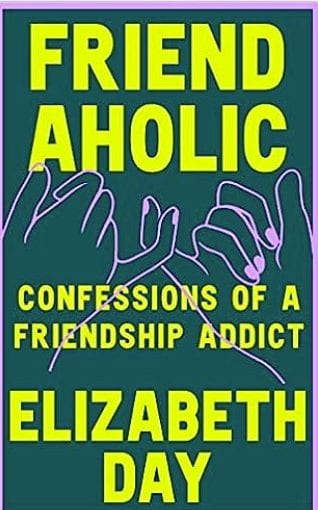I often follow the Blue Zones instagram account. Here they look at the longest lived people around the world and draw out some of the reasons why they are so old. In Okinawa there are moais, groups of 4 or 5 people who are your friend from childhood, and in Sicily people meet their friends in the evenings and these are a clear benefit to aging well. Something that Day also refers to in her book Friendaholic. Friendships matter and can have positive benefits for mental health.
When I first picked this book up I wondered how you could be a friendaholic. Well, Day can tell you. You make friends everywhere, overshare at the first meeting thinking you have a new soulmate, you overgive of your time and energy because you can’t say no, you put up with behaviour that you wouldn’t in a romantic partner and you don’t know how to end a friendship. Blimey. Who knew there was so much to friendship.
Day and the friendship coach (Yup. There is such a thing) she spoke to categorised friends falling into two groups, hobby friends and activity friends with both tending to the idea that activity friends are the more important which irritated me as most of mine are hobby friends. I have friends for reading and talking about books, friends for sewing with and friends for gardening with and friends that are couple friends who we like to eat with and have a fun evening. These are not the types of friends Day talks about.
Day came to reflect on friendship following lockdowns where we were all unable to meet with our friends who were not in our social bubble and can vividly remember the first time she met her best friend after months of not doing so. Lockdowns have a lot to answer for!
The book then goes on to describe different types of friendship that Day has – friends with men, friends with clear boundaries, friends who ghost you – and what she needs to learn to be a good friend. In fact her friend Sathnam describes it very clearly when he states that he wouldn’t want to be her friend if she tried to reignite a friendship that had fizzled out. It would show that she had no clear boundaries, allowed friends to walk over her and deminished the friendships that she did have. I still don’t get how she managed to be friends with so many people and have a husband. When did she spend time with him?
The book is an interesting idea, well-researched but not subtle in its inclusion of the research in the text, and a little too much for me. I did recognise friends in the book and also myself sometimes but found that inspecting each friendship a little over the top and tiring.
This is navel-gazing taken to the nth degree.
